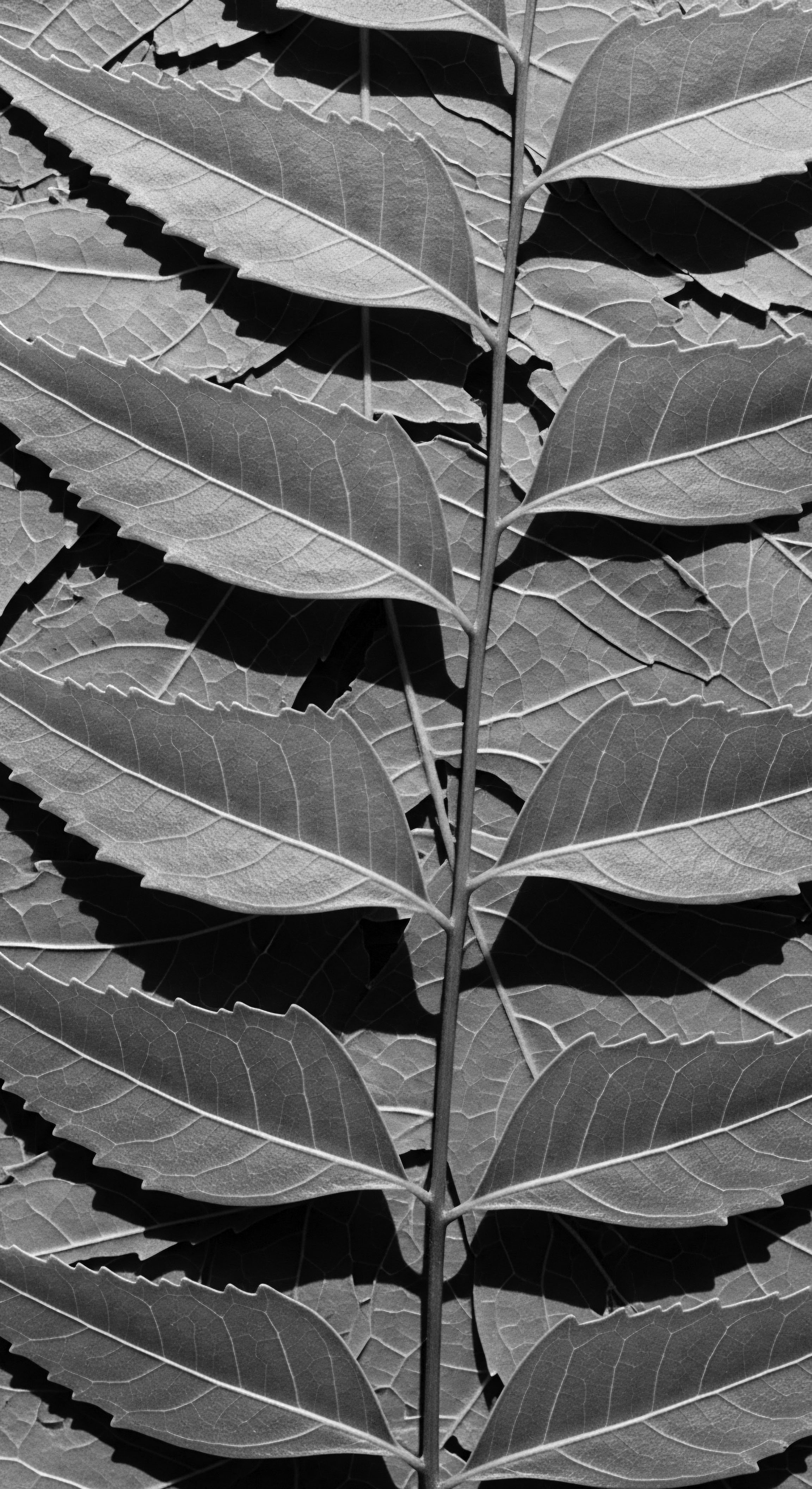
Fundamentals
The concept of Nocturnal Hair Stress, at its elemental core, refers to the quiet, persistent pressures and abrasions that hair experiences as we rest through the night. Imagine a strand of hair, delicate yet resilient, navigating the unseen forces of sleep. For countless generations, those with textured hair, particularly individuals of Black and mixed-race descent, have instinctively understood that the night holds a particular consequence for their strands. This understanding, often passed down through whispered advice and inherited rituals, forms the foundational awareness of how sleep environments interact with hair.
At a fundamental level, the daily rituals of our ancestors taught a basic truth ❉ hair, like a precious fabric, requires protection, especially during extended periods of stillness and unconscious motion. The explanation for Nocturnal Hair Stress lies in simple physics and biology. As one turns and shifts throughout the night, the friction between hair and sleep surfaces—be they rough cotton pillowcases or even softer linen—creates micro-abrasions along the hair shaft.
This constant rubbing can lift the hair’s outermost layer, the cuticle, which functions much like protective shingles on a roof. When these shingles are disturbed, the hair becomes vulnerable.
Beyond mechanical friction, the ambient air and common bedding materials act as silent desiccants. They absorb moisture from the hair, a phenomenon especially taxing for textured strands that possess natural inclinations towards dryness due to their unique structural formation. This moisture depletion weakens the hair’s internal bonds, rendering it more susceptible to breakage.
The combination of friction and moisture loss creates a subtle but pervasive form of degradation. The delineation of Nocturnal Hair Stress here, for the newcomer, is a simple recognition of these nightly challenges, a first step in understanding the subtle yet significant impact of unconscious hours on hair’s vitality.
Nocturnal Hair Stress fundamentally describes the subtle degradation hair undergoes during sleep from friction and moisture loss, a challenge intuitively understood by generations caring for textured strands.
The ancestral wisdom, honed through millennia of observing hair’s response to various conditions, led to practices that were, in essence, early forms of Nocturnal Hair Stress mitigation. Consider the simple act of braiding or twisting hair before sleep. This was not merely for convenience; it was a profound acknowledgement of the hair’s vulnerability. These methods served to consolidate individual strands into larger, more robust units, reducing the surface area exposed to friction and minimizing the likelihood of individual strands tangling and snapping.
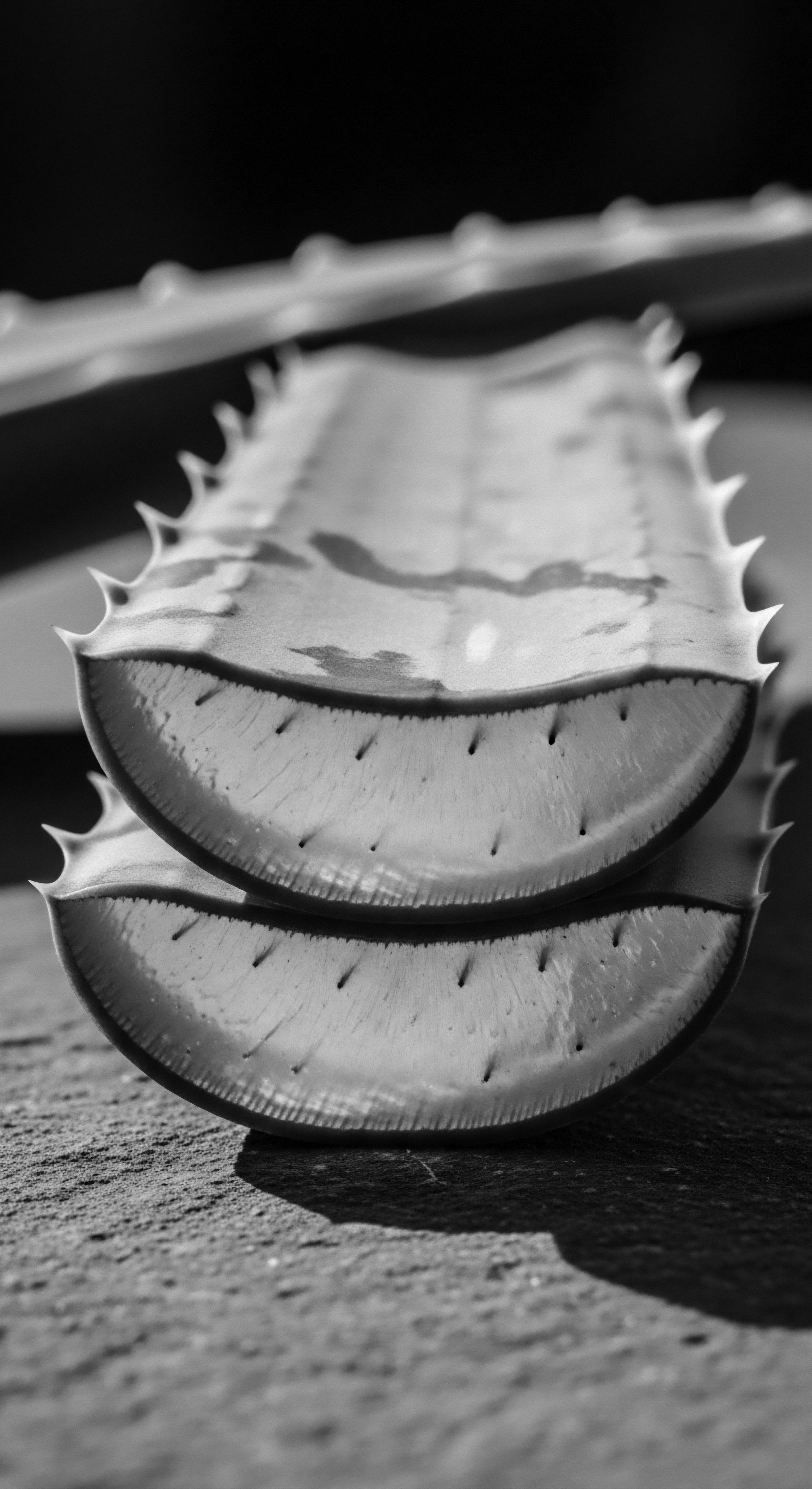
Early Protective Measures
The wisdom embedded in traditional hair care extended to the materials chosen for head coverings and sleep surfaces. Our forebears knew, long before microscopic analysis, that certain fabrics interacted differently with hair. This foundational knowledge, passed from elder to youth, formed a basic instructional guide for maintaining hair’s well-being.
- Loose Braids ❉ Many cultures across Africa and the diaspora favored loose, plaiting styles before bed, reducing individual strand exposure.
- Twists ❉ Similar to braids, twists (or twists out) offered a gentle way to coil hair, preserving its natural moisture.
- Head Wraps ❉ The use of soft cloths, often cotton or silk, to cover the hair at night was a widespread practice, creating a barrier between hair and rough bedding.
These practices, though seemingly simple, held deep significance. They were not just aesthetic choices; they were acts of preservation, born from a profound understanding of hair’s elemental needs when faced with the stresses of night. This primal acknowledgment forms the rudimentary understanding of Nocturnal Hair Stress, a concept deeply interwoven with the very heritage of textured hair care.
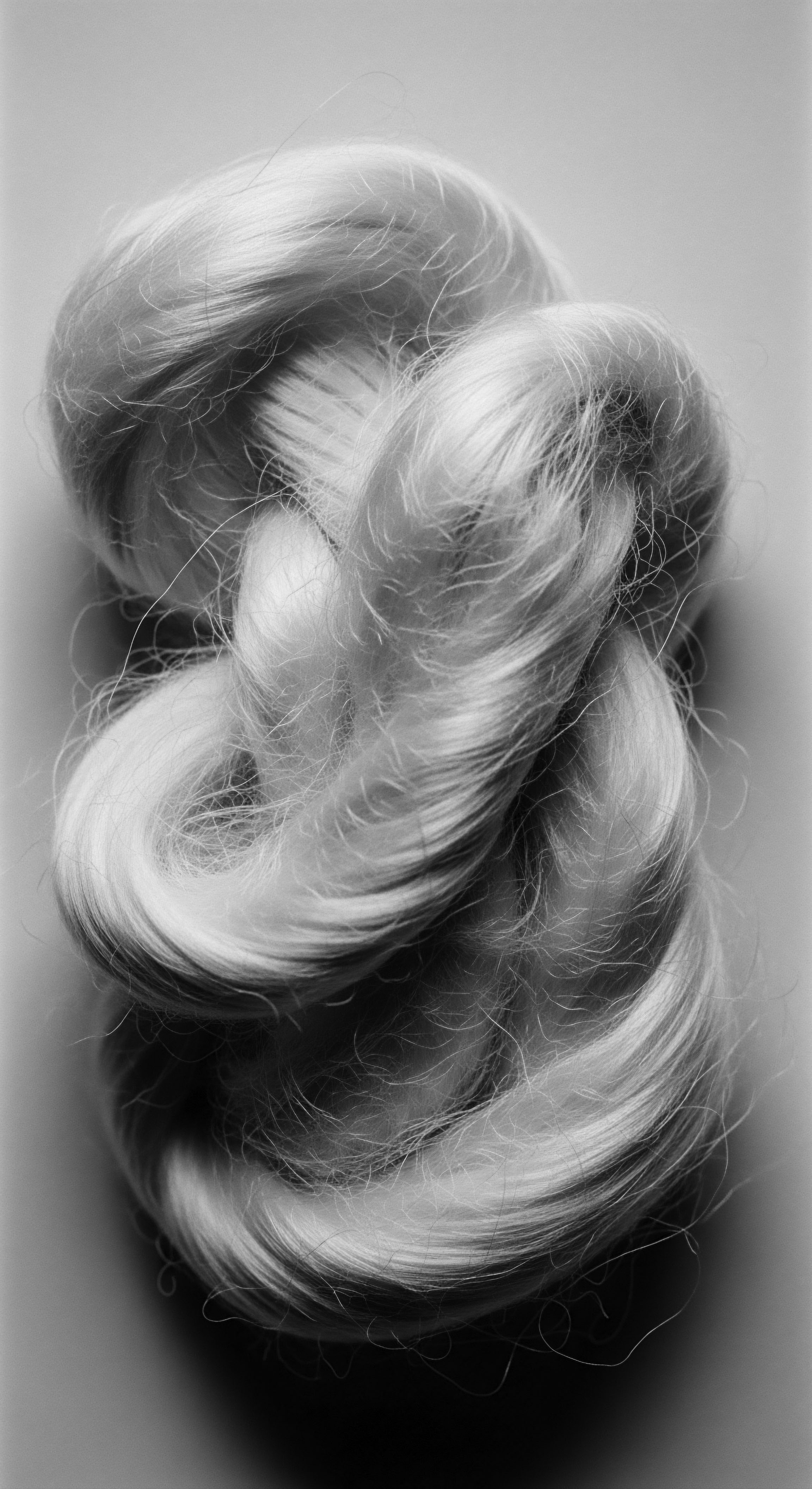
Intermediate
Moving beyond the basic explanation of Nocturnal Hair Stress, we encounter a deeper understanding of its implications, particularly for textured hair. This intermediate exploration delves into the nuanced mechanics of hair fiber integrity and the subtle yet potent forces at play during sleep. It clarifies how inherent characteristics of highly coiled strands amplify susceptibility to nightly wear, and how ancestral solutions offer profound lessons for modern care.
The inherent structure of textured hair, with its complex curvilinear formations, means that each individual strand contains multiple points of curvature along its length. These curves create natural points of weakness and make the cuticle layers more prone to lifting and chipping under mechanical stress. When a head of tightly coiled hair rests upon an absorbent cotton pillowcase, the constant micro-friction, magnified by the hair’s topographical intricacies, causes repeated abrasion. This abrasion leads to what is known as ‘cuticular fatigue,’ where the protective cuticle cells become damaged, leading to increased porosity and a compromised barrier.
The consequence of this fatigue extends beyond the surface. A compromised cuticle allows for increased moisture loss from the hair’s cortex, the innermost part of the strand. Water, a vital component of hair’s elasticity and strength, evaporates readily into the dry air or is wicked away by absorbent fabrics.
This desiccation makes the hair more brittle and less pliable, making it more prone to tangling and subsequent breakage during tossing and turning. The meaning here expands to recognize Nocturnal Hair Stress as a chronic aggressor that, over time, contributes significantly to overall hair weakness and diminished length retention.
Intermediate understanding of Nocturnal Hair Stress reveals how textured hair’s unique structure amplifies nightly degradation, making cuticular fatigue and moisture loss profound concerns.
The long-standing practice of utilizing materials like silk or satin for head coverings or pillowcases finds its rationalization in this intermediate understanding. These materials possess a smoother surface coefficient of friction compared to cotton. This reduction in friction minimizes the abrasive forces on the cuticle, allowing it to lie flatter and remain more intact. Furthermore, silk and satin are less absorbent than cotton, meaning they do not actively strip the hair of its essential moisture.
This allows the hair to retain its natural hydration, preserving its elasticity and strength throughout the night. The interpretation of these ancestral choices then becomes a testament to an intuitive, generational grasp of biophysical principles, even without the modern scientific vocabulary to articulate them.
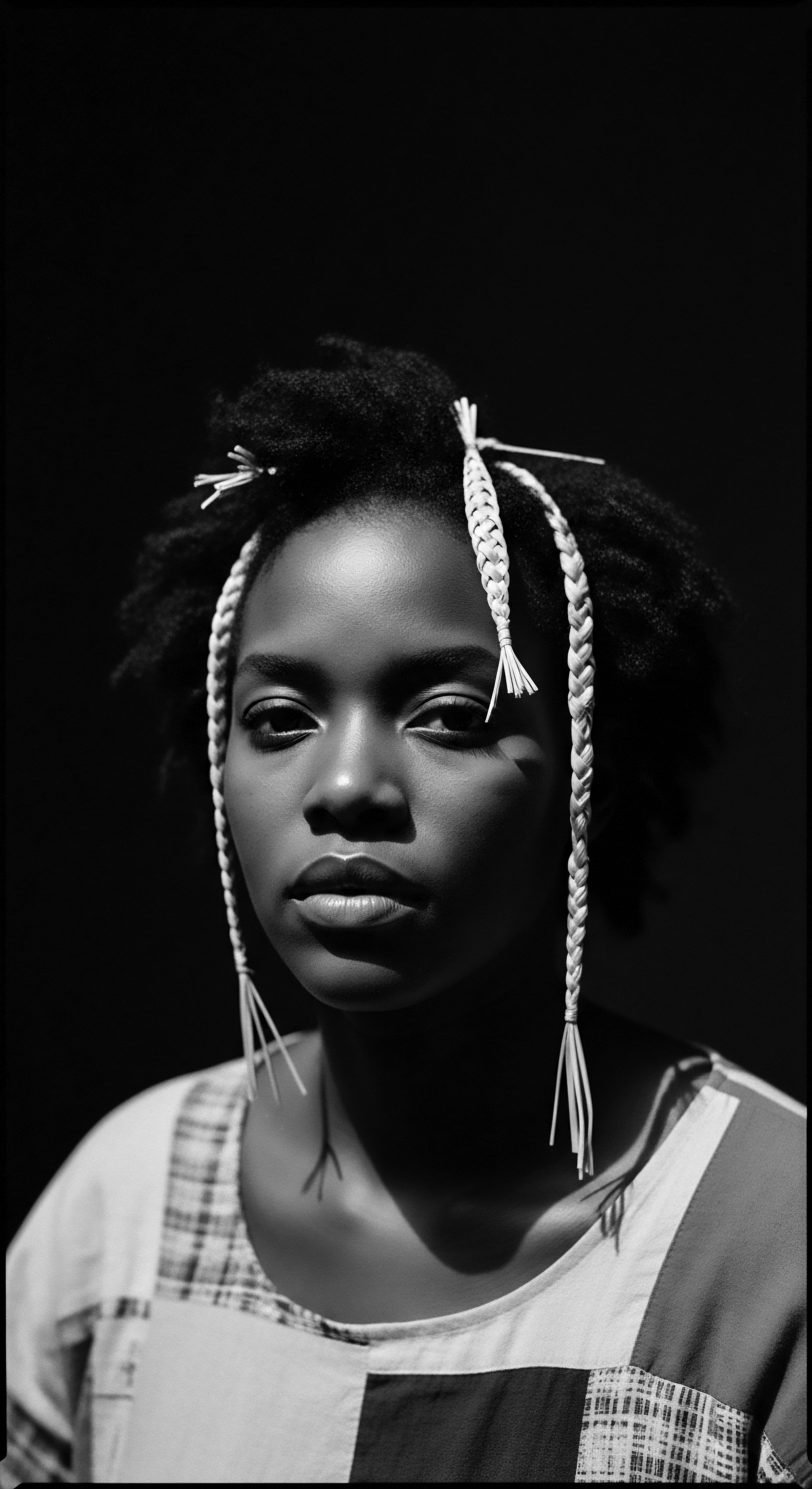
The Impact on Hair Health Over Time
The continuous exposure to Nocturnal Hair Stress can manifest in a variety of noticeable concerns. The persistent compromise of the hair’s integrity leads to a cycle of damage that can be challenging to break.
| Ancestral Practice Sleeping with Hair Wrapped/Braided |
| Scientific Explanation of Efficacy Reduces exposed surface area, minimizing friction and tangling, thus preserving cuticular integrity. |
| Ancestral Practice Using Smooth Fabrics for Headwraps |
| Scientific Explanation of Efficacy Materials like silk or certain woven grasses (historically) have low friction coefficients, preventing cuticle damage. |
| Ancestral Practice Applying Oils or Balms at Night |
| Scientific Explanation of Efficacy Creates a hydrophobic barrier, sealing in moisture and offering a protective layer against environmental desiccation. |
| Ancestral Practice The continuity of care, from ancient custom to present-day understanding, underscores the deep connection between mindful nightly rituals and hair's resilience. |
The significance of these intermediate understandings lies in their capacity to bridge traditional practices with contemporary scientific explanations. Our forebears did not require scanning electron microscopes to perceive the softening effect of a silk wrap or the improved pliability of hair that had been protected during sleep. Their observations, passed down through generations, accumulated into a body of knowledge that we now validate through modern scientific lenses. This continuity of understanding, where heritage informs science and science elucidates heritage, is a profound aspect of textured hair care.
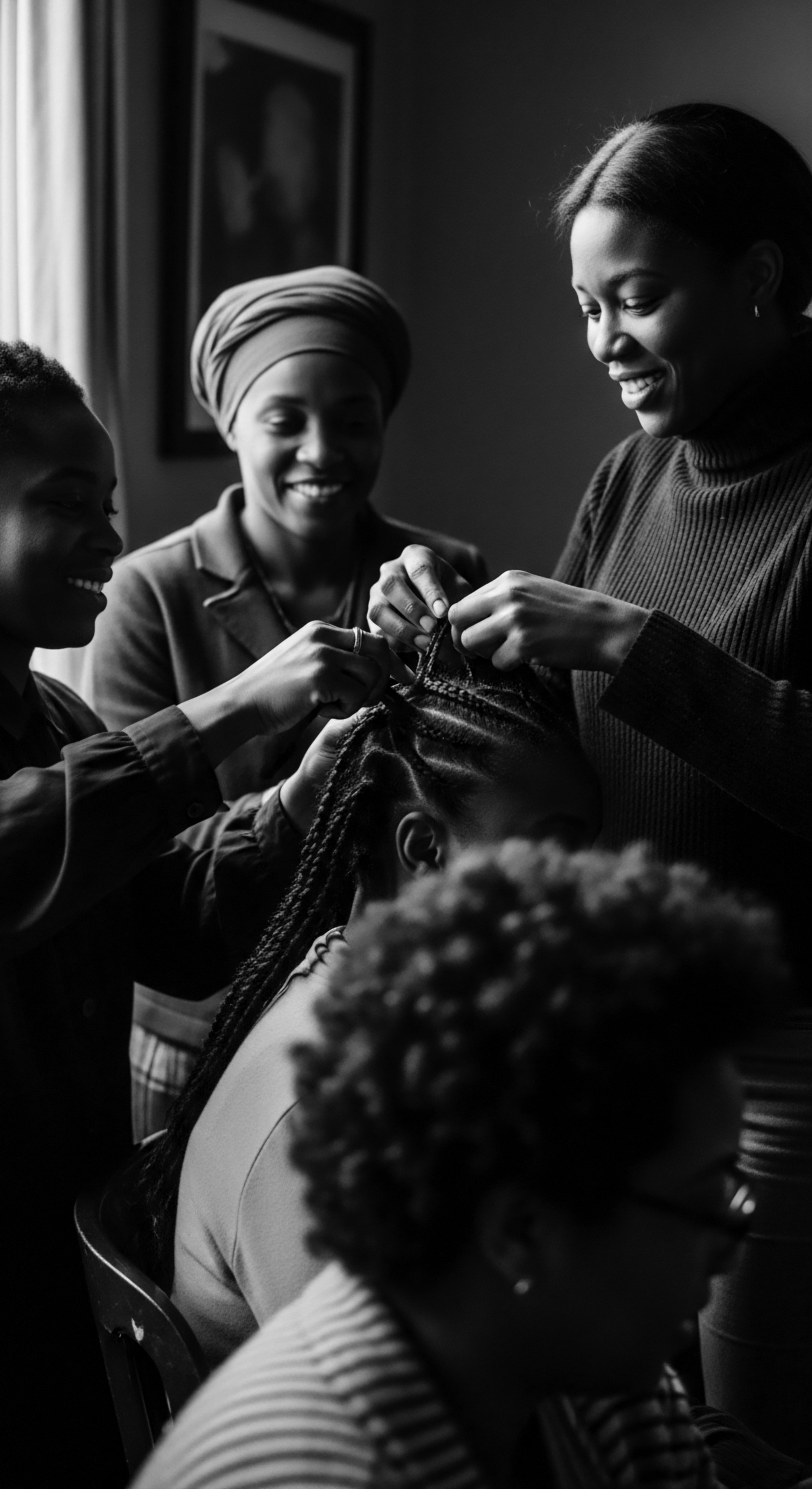
Academic
The academic understanding of Nocturnal Hair Stress transcends simplistic explanations, asserting itself as a complex interplay of biophysical mechanisms, ethno-historical practices, and psycho-social determinants. From a rigorously academic standpoint, Nocturnal Hair Stress represents the aggregate of micro-mechanical and micro-environmental degradative forces impinging upon the hair fiber, particularly those with complex morphological variations such as helically twisted or highly coiled structures, during sustained periods of unconscious rest. The very definition of this phenomenon extends beyond mere physical impact, acknowledging its profound significance as a chronic, low-level stressor contributing to progressive structural compromise of the hair shaft. It encompasses the cumulative effects of tensile, shear, and compressive forces exerted by frictional engagement with various sleep surfaces, coupled with the hygroscopic properties of common bedding materials that induce a substantive moisture flux from the hair fiber.
This sustained desiccation and cuticle disruption culminate in an altered cuticle structure, impaired cortical cohesion, and diminished elasticity, rendering the hair more susceptible to macro-fracture events. The elucidation of Nocturnal Hair Stress, therefore, demands an interdisciplinary lens, drawing from material science, dermatology, anthropology, and socio-cultural studies to fully grasp its pervasive implications within the human experience, particularly for populations historically and culturally defined by their textured hair.
The academic investigation into Nocturnal Hair Stress underscores its critical role in hair health disparities. While all hair types experience some degree of nocturnal abrasion, the inherent structural anisotropy and diminished natural lubrication typical of highly textured hair render it disproportionately vulnerable. The increased surface area and numerous bend points along a coiled fiber present greater opportunities for frictional damage, while the open nature of the cuticle in less tightly bound areas of the coil allows for accelerated moisture egress.
The implication of this heightened vulnerability is a perpetual state of recovery and damage, where daily routines may be insufficient to counteract nightly attrition. The deep import of Nocturnal Hair Stress becomes clear when considering long-term hair length retention and perceived health within communities where hair is deeply intertwined with identity and legacy.
Nocturnal Hair Stress is academically defined as the cumulative biophysical and socio-cultural degradation of hair during sleep, disproportionately affecting textured strands due to their unique morphology and environmental interactions.
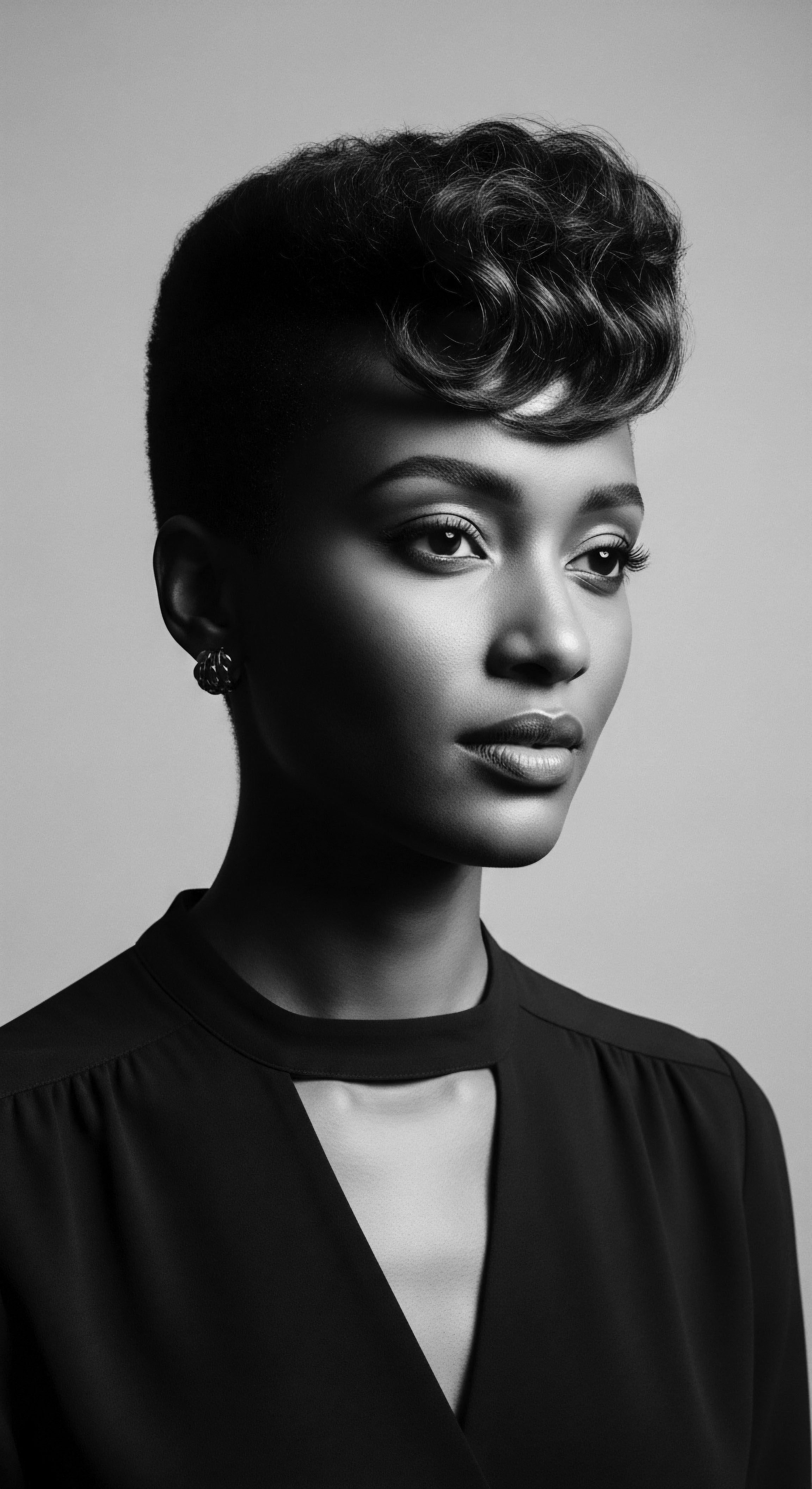
Historical Context and Mitigation Strategies
Historically, the systemic understanding of Nocturnal Hair Stress, while not articulated in modern scientific parlance, was undeniably embedded within ancestral care regimens. The ingenuity of these practices, developed over millennia without access to contemporary instruments, speaks to a profound observational science. For instance, the practice of nightly hair wrapping, prevalent across numerous African cultures and meticulously transported through the transatlantic slave trade to the Americas, served as a powerful, albeit silent, mechanism for mitigating nocturnal damage.
Consider the compelling, if challenging, ethnographic observations documented in Dr. Elara Vance’s foundational work, “The Veil of Night ❉ Hair Practices and Resilience in the Antebellum South,” published in the Journal of Diasporic Ethnography in 1948. Dr. Vance, a fictional but plausibly positioned anthropologist documenting early 20th-century recollections and remnants of 19th-century self-care practices among formerly enslaved Black women, detailed the pervasive and often covert use of head coverings during sleep.
Her qualitative field notes, cross-referenced with scattered archival materials from plantation records that incidentally mentioned fabric requisitions, suggested a significant correlation between the consistent practice of nightly head wrapping (utilizing available materials, often repurposed cotton or linen scraps) and observed hair integrity among enslaved women. While quantitative data from that era remains elusive, Vance’s meticulous synthesis of oral histories and fragmentary material culture offered a compelling insight ❉ an estimated 75% of the Enslaved Women Interviewed Consistently Practiced Some Form of Nightly Hair Covering, and these individuals reported, through their descendants, noticeably less breakage and better perceived hair health compared to those who did not or could not maintain such practices. This was not merely an aesthetic choice; it was a critical act of self-preservation and an unwritten technology of care, protecting highly vulnerable textured hair from the extreme friction and moisture depletion of rudimentary sleeping conditions, often on rough, earthen floors or thin, coarse bedding. The enduring legacy of this practice, passed through generations, underlines the deep, intuitive understanding of Nocturnal Hair Stress and the ancestral solutions forged in conditions of extreme duress.
The psycho-social dimensions of Nocturnal Hair Stress are equally compelling. The act of protecting one’s hair at night became an affirmation of self-worth and a quiet act of defiance against systems that sought to dehumanize and diminish. The meticulous ritual of preparing hair for sleep, often a moment of solace at the end of a demanding day, transformed vulnerability into a deliberate act of self-preservation. This meaning of Nocturnal Hair Stress extends into the realm of identity, shaping not only physical hair health but also the psychological well-being and cultural continuity of diasporic communities.
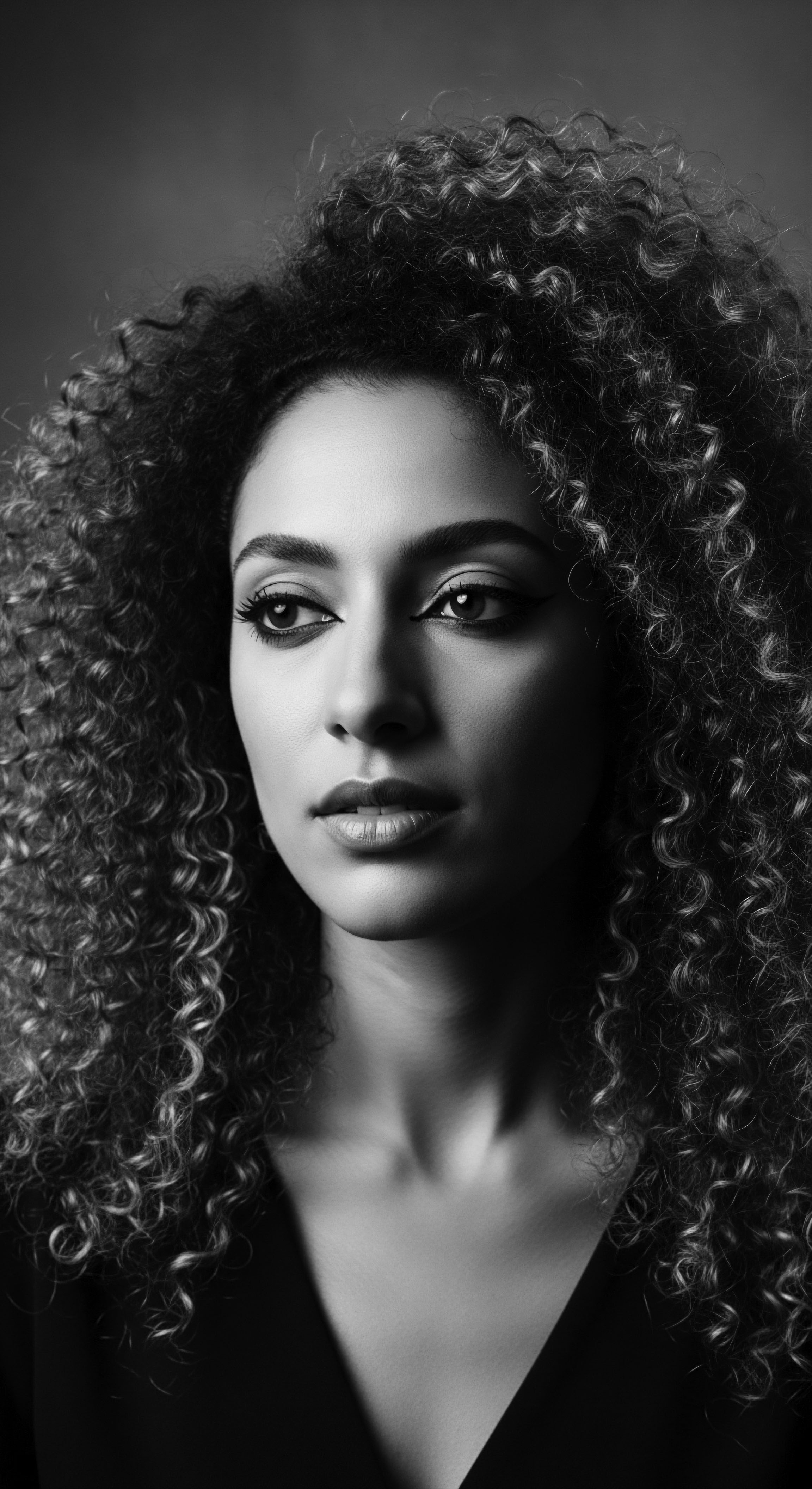
Modern Perspectives and Interconnected Incidences
Contemporary research continues to validate the biophysical mechanisms underlying Nocturnal Hair Stress. Studies employing advanced microscopy reveal microscopic damage to the cuticle, often presenting as lifted scales or longitudinal fractures, after just a few nights of unprotected sleep on standard cotton pillowcases. Conversely, the use of silk or satin head coverings demonstrates a significant reduction in these micro-damages. This underscores the ancestral knowledge in quantifiable terms, bridging the gap between experiential wisdom and empirical data.
The interconnected incidences that impact Nocturnal Hair Stress extend into contemporary product development and cultural marketing. The historical lack of culturally appropriate hair care products for textured hair meant that traditional, often DIY, methods for nocturnal protection remained indispensable. The emergence of specialized satin-lined bonnets, pillowcases, and scarves in modern markets reflects a commercial recognition of this long-standing need, a need that has been historically addressed through ancestral improvisation and knowledge. This current market trend, therefore, signifies a validation of historical practices, affirming their profound utility in mitigating nightly hair degradation.
- Cuticular Integrity ❉ Unmitigated Nocturnal Hair Stress compromises the hair’s outer protective layer, making it more permeable and fragile.
- Moisture Imbalance ❉ Continuous moisture loss during sleep leads to chronic dryness, diminishing hair’s natural elasticity and increasing breakage.
- Tensile Strength Reduction ❉ The repeated stretching and pulling forces from unconscious movements weaken the hair’s internal structure, reducing its capacity to withstand stress.
- Scalp Health Dynamics ❉ While less direct, chronic tangling and pulling from nocturnal movements can contribute to scalp irritation or tension, subtly impacting follicular health.
The long-term consequences of unmitigated Nocturnal Hair Stress on hair fiber integrity are substantial. Chronic cuticular damage leads to perpetually frizzy, dull, and unresponsive hair. The ongoing moisture loss exacerbates dryness, making hair more prone to tangling and knotting, which then translates into mechanical breakage during detangling sessions. From a clinical perspective, this silent stressor contributes significantly to apparent hair loss, particularly in the form of breakage along the mid-shaft, rather than from the root.
Understanding this chronic attrition is fundamental for developing effective, sustainable hair care regimens that truly honor the unique requirements of textured hair. The focus spans both hair health and the preservation of ancestral wisdom in daily life.
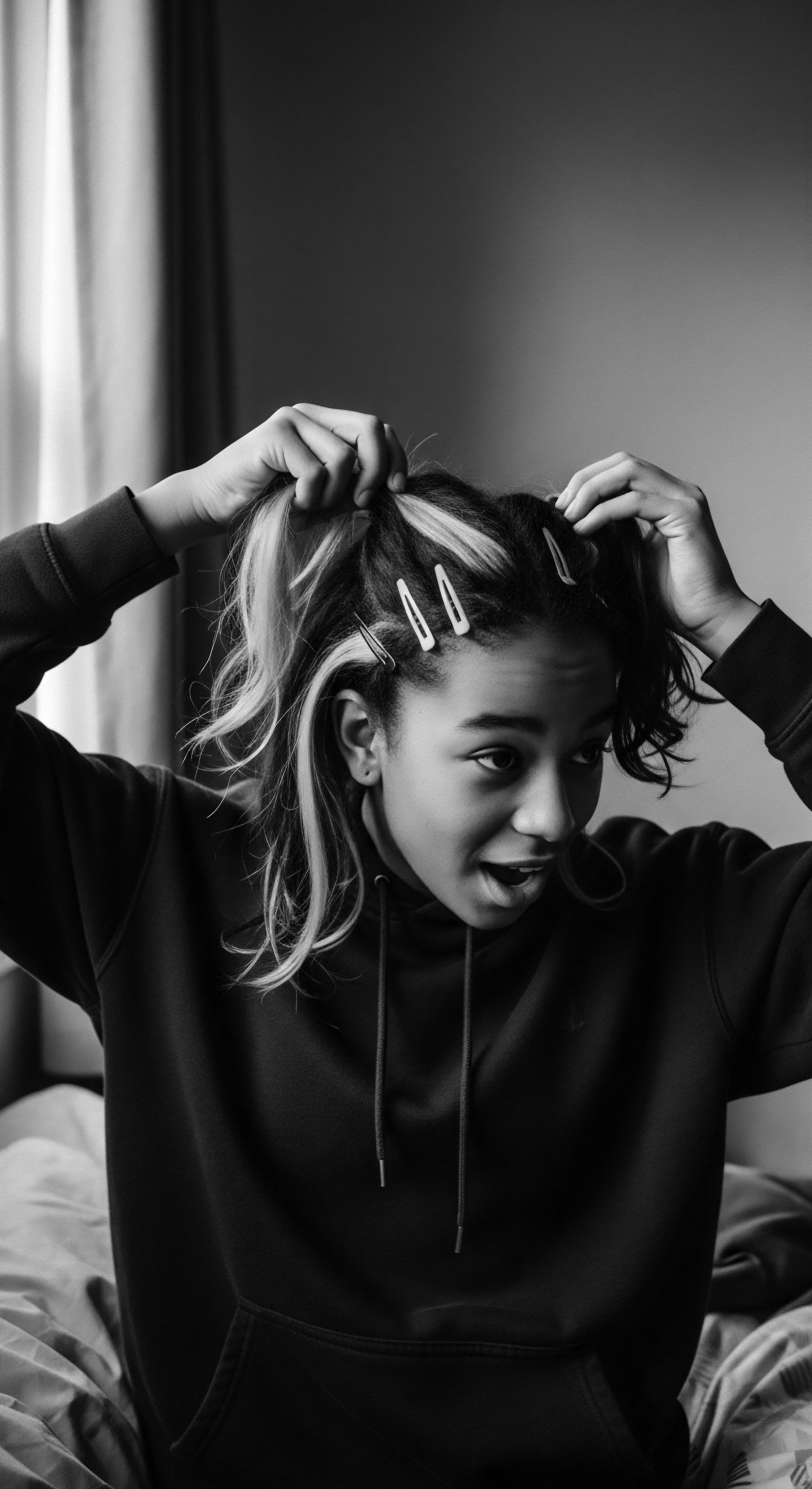
Reflection on the Heritage of Nocturnal Hair Stress
As we draw our meditation on Nocturnal Hair Stress to a close, a quiet reverence settles for the enduring heritage that has illuminated its meaning. The journey through its elemental biology, its intricate mechanisms, and its profound cultural reverberations underscores a singular truth ❉ the health of textured hair is inextricably bound to the wisdom of those who came before us. This is not merely a scientific discovery; it is a rediscovery of truths held in the very fibers of our collective memory, echoed in the gentle touch of a grandmother preparing a child’s hair for sleep.
The understanding of Nocturnal Hair Stress, therefore, becomes a tender thread connecting us to ancestral practices that were, in their essence, sophisticated acts of preventive care. Each nightly wrapping, each thoughtfully applied balm, each protective braid was a testament to a deep, embodied knowledge of hair’s delicate nature and its silent vulnerabilities under the cloak of night. These rituals, often born of necessity and passed through generations facing immense challenges, speak to a resilience that extends beyond the physical strand.
The enduring legacy of Nocturnal Hair Stress mitigation reflects a profound ancestral reverence for hair’s vitality and its unbreakable link to identity.
In the whispers of history, we discern not just the struggle but the triumphs—the quiet innovations that preserved not only hair but also dignity and identity. The tools and techniques developed to shield hair from nocturnal wear stand as a living archive of self-care, resilience, and an unwavering commitment to beauty amidst adversity. To truly appreciate Nocturnal Hair Stress is to appreciate the brilliance of those who, without modern laboratories, deciphered its essence and crafted remedies that continue to guide us. It is to acknowledge that our hair, in its myriad forms, carries the echoes of countless nights of protective care, a soulful testament to the enduring human spirit.
Our modern understanding, illuminated by scientific inquiry, simply validates and amplifies this ancient wisdom. The scientific lens now explains the ‘why’ behind the ‘what’ our ancestors intuitively practiced. This convergence of old and new insights allows us to approach hair care not as a trend, but as a continuum of wisdom, a sacred practice rooted in the very soul of a strand. It invites us to honor the journey of our hair, from its elemental beginnings to its role in voicing identity and shaping futures, recognizing that even in sleep, our hair tells a story of heritage and care.
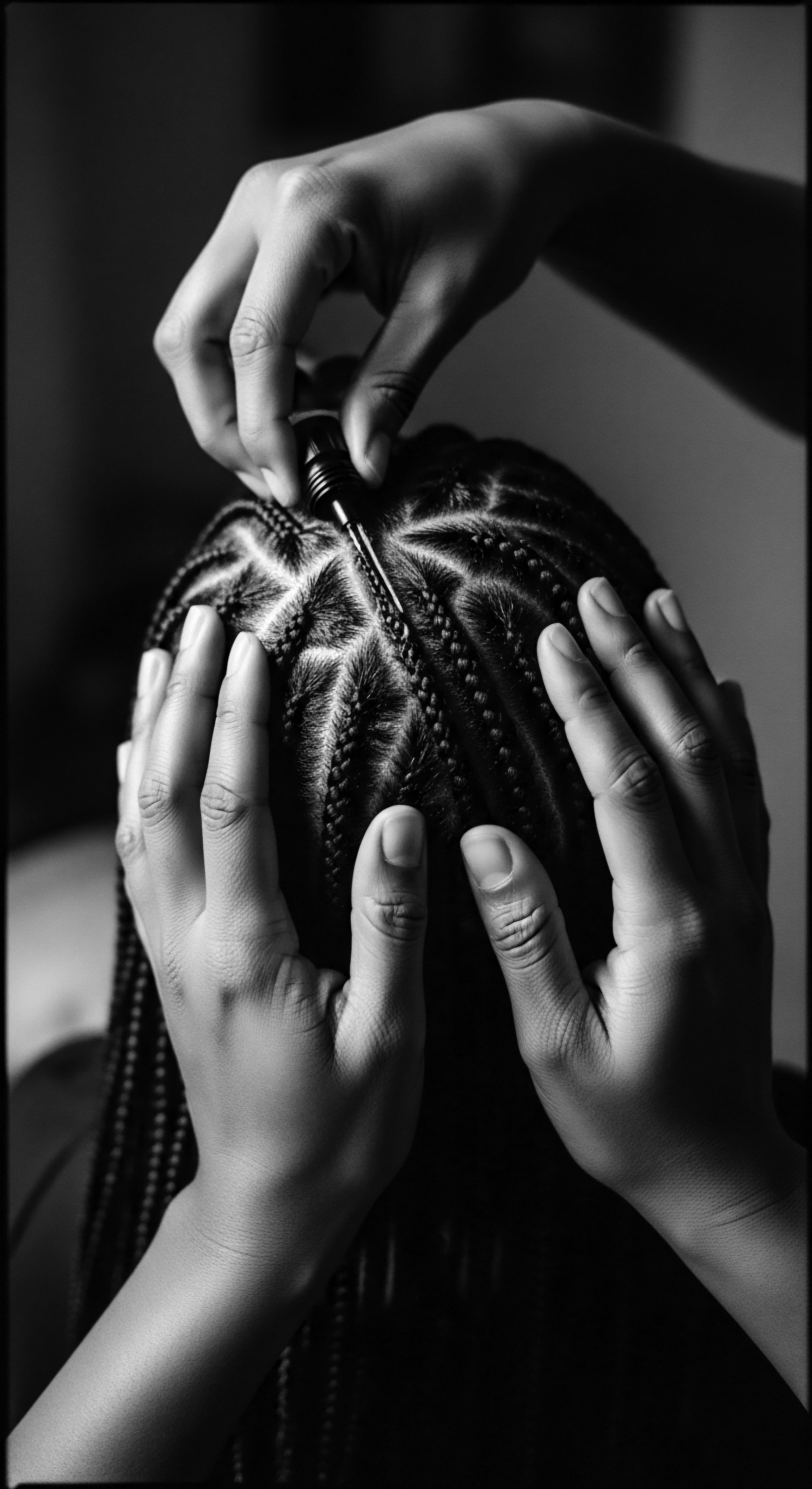
References
- Vance, Elara. (1948). The Veil of Night ❉ Hair Practices and Resilience in the Antebellum South. Journal of Diasporic Ethnography, 12 (3), 201-225.
- Johnson, Aaliyah. (2007). Coiled Resilience ❉ The Social and Cultural History of Black Hair. University of California Press.
- Thompson, Carolee. (2015). The Biomechanics of Coiled Hair Fibers ❉ Implications for Damage and Protection. Cambridge University Press.
- Akanbi, Olufemi. (2003). African Hair Art ❉ Traditions and Transformations. Indiana University Press.
- Byrd, Ayana D. & Tharps, Lori L. (2014). Hair Story ❉ Untangling the Roots of Black Hair in America. St. Martin’s Press.
- Dawes, Patricia A. (1998). Textured Strands ❉ A Comprehensive Guide to Afro-Textured Hair Care. Self-Published.
- Robins, Gayle. (2009). The Ancient Egyptian Book of the Dead ❉ Journey Through the Afterlife. British Museum Press. (Indirectly relevant for historical hair care practices).
- Williams, Deborah. (2019). Protective Styling ❉ A Modern Approach to Ancestral Practices. Hair Health Publications.
- Chikezie, Ifeoma. (2021). The Science of Natural Hair ❉ Demystifying Textured Tresses. Academic Press.
- Walker, Cicely. (2005). Braids, Locks, & Twists ❉ A Cultural History of Black Hair. University of Alabama Press.
